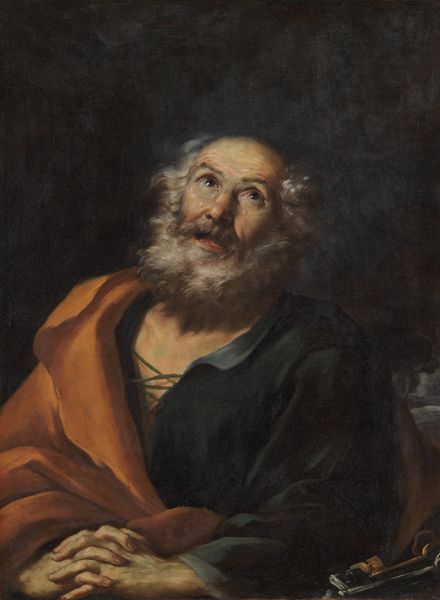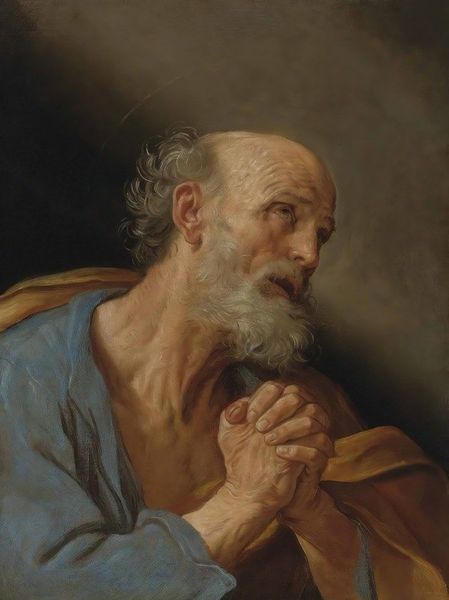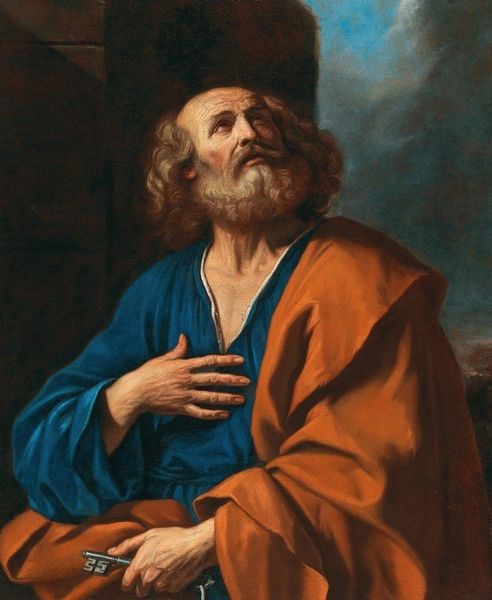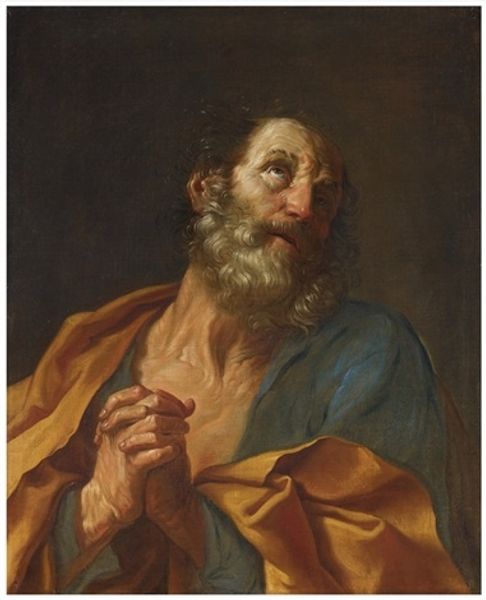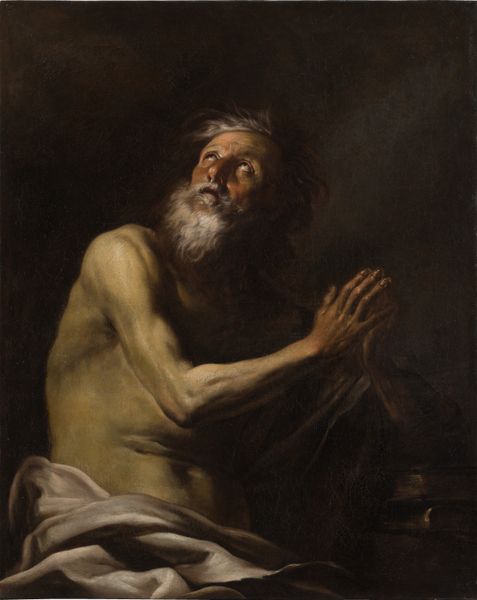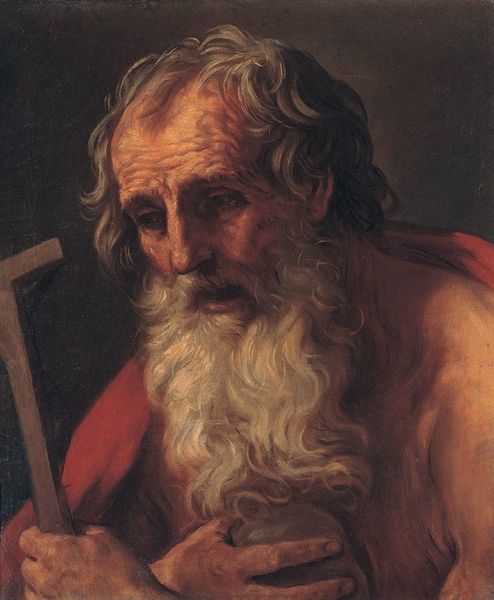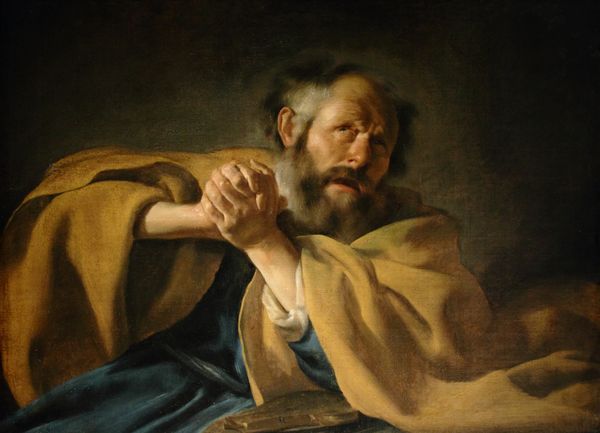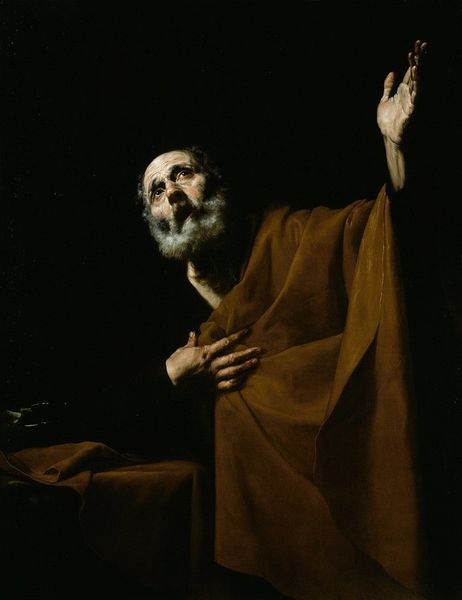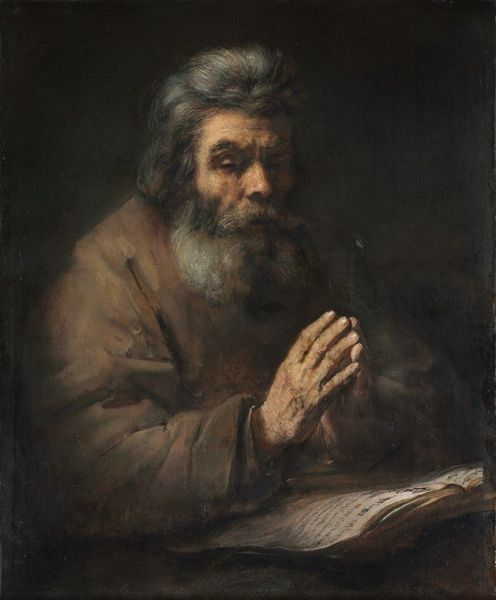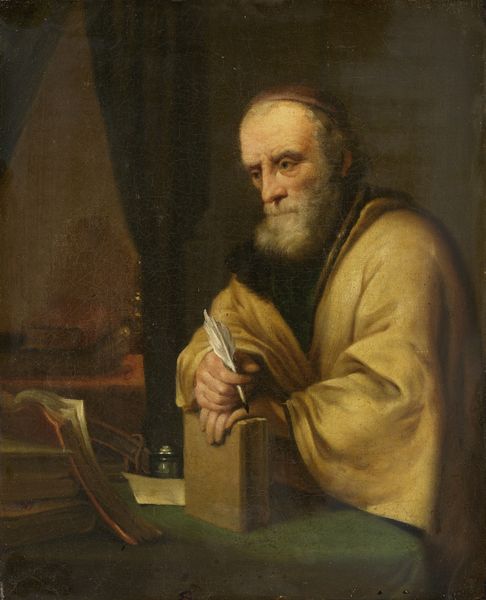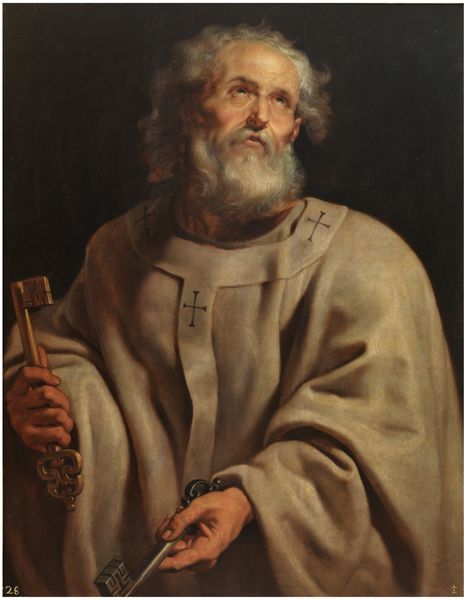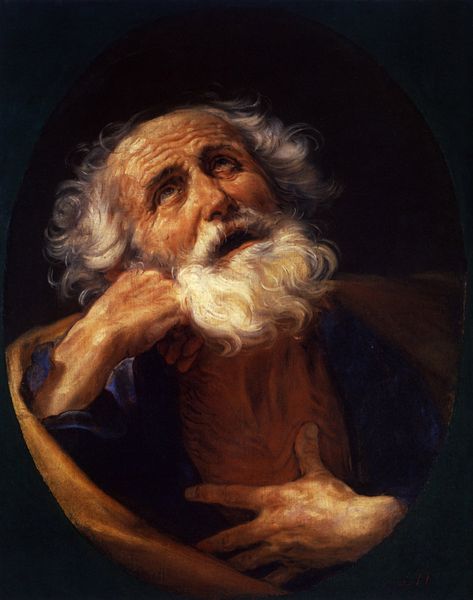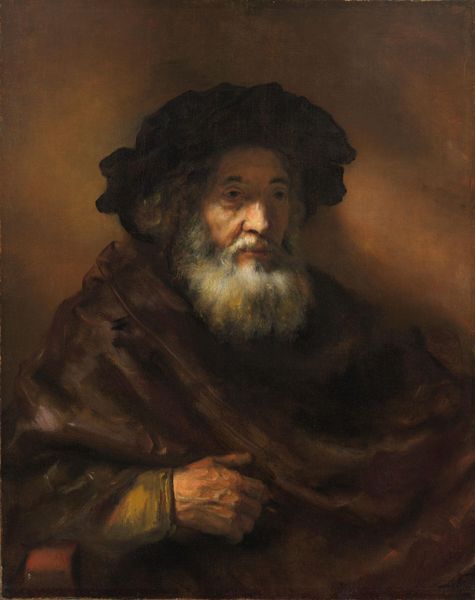
painting, oil-paint
#
portrait
#
baroque
#
portrait
#
painting
#
oil-paint
#
chiaroscuro
#
history-painting
Copyright: Public domain
Editor: Here we have Gerard van Honthorst's oil painting, Saint Peter Penitent. The high contrast and somber mood are really striking. What do you see in this piece that I might be missing? Curator: Well, beyond the surface drama, think about *why* Honthorst chose this moment of repentance. Baroque art, especially after the Council of Trent, was deeply invested in the theater of religious experience. Peter's denial of Christ became a potent symbol, a reminder that even leaders are fallible. This work reflects anxieties around institutional power and challenges traditional, heroic narratives by spotlighting vulnerability. Editor: So, you're saying it’s a commentary on power structures within the church itself? Curator: Precisely! The intense chiaroscuro, where darkness nearly engulfs the figure, speaks to the internal turmoil. He's not just repenting; he's confronting his betrayal, a pivotal moment of moral reckoning. Also consider what isn't shown – the absent figure of Christ. Does this create a visual representation of that absence? Editor: That's interesting, it places all of the responsibility on Peter. Curator: Exactly. Furthermore, look at how the keys, symbols of his authority, lie discarded. What do these stylistic and iconographic choices reveal about the societal dynamics surrounding faith, leadership, and guilt in Honthorst's time? Editor: I never thought about it that way before! I guess there's more to a repentant saint than just… remorse. Curator: Indeed. Art provides a window into the complexities of faith, fallibility, and the ever-shifting power dynamics within religious and societal structures. Hopefully that gives you a fuller picture.
Comments
No comments
Be the first to comment and join the conversation on the ultimate creative platform.
